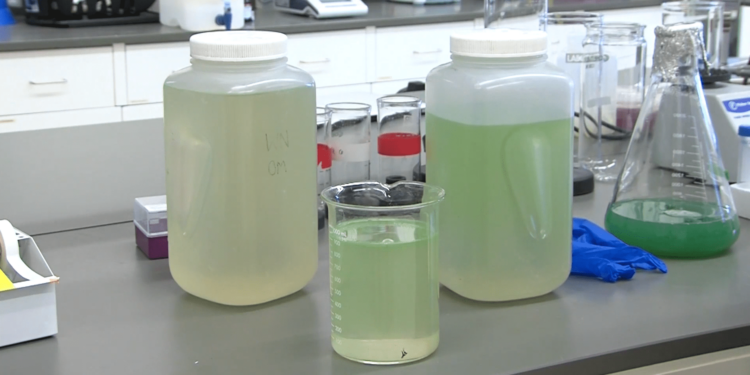IRON RIVER, Mich. (WZMQ) – The Director of Environmental Health, Wade Dishaw, revealed the long-awaited water test results regarding the potential harmful algal bloom on Brule Lake in Iron County.
Initially, a preliminary strip test provided some relief as it came back negative. However, with an abundance of caution, further samples were dispatched to a state lab by the Michigan Department of Health and Human Services. Now, nearly two weeks after the initial scare, the Dickinson-Iron District Health Department continues to issue warnings to the public, urging them to halt all recreational activities on Brule Lake. This alarming situation marks the second consecutive year that the lake has fallen victim to these troubling algal blooms.
Director Wade Dishaw provided a statement, saying, “All four cyanotoxins that they tested for that come out of these blooms were not detected or negative. That means that there are no cyanotoxins at the time of testing. Now that doesn’t mean that there weren’t cyanotoxins there prior or even after the testing because these blooms can turn off and on for these cyanotoxins. So the state recommends that people still – if there’s a visible bloom, that they do not swim or have their pets swim in these areas.”
While the cause of this persistent algae bloom remains unconfirmed, one likely suspect is the runoff from artificial fertilizer use. Additionally, factors like sunlight and temperature may be contributing to the recurring algal issue. Unless new bloom sightings emerge in the area, there are no plans for further testing at this time.
EGLE, Michigan department of Environment, Great Lakes, and Energy and the Michigan Department of Health and Human Services work together to address algal blooms. When there are reports of algal bloom sightings to MDHHS, EGLE collects the sample and sends it to the MDHHS lab.
The last reports of sightings were prior to the last rainfall, which was just a few days ago. Prior to that, there were several people calling with reports of algae blooms.
For more information on what to do if you have been exposed to the water that is potentially a harmful algal bloom, or to find out how to identify an algal bloom, see WZMQ’s previous story on the algal bloom warning, by visiting:


















